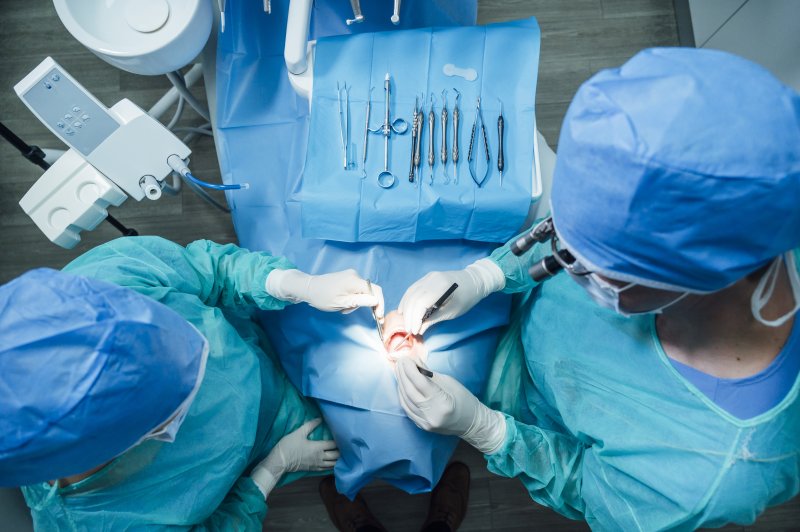
Gum disease is one of the most prevalent dental problems seen by dentists and specialists today. With millions of Americans unaware of their symptoms, it often takes a visit to the dentist or periodontist to learn oral surgery is needed to fix soft tissue problems. Depending on the severity of your case, an expert will recommend one of the various types of gum grafts and explain why it’s necessary to improve your smile. Read on to learn more about these unique procedures and what you can expect.
Gingival Flap Surgery
When gum disease progresses and causes bacteria to spread underneath the soft tissue, there is a good chance your periodontist will recommend this type of procedure. Necessary for removing bad bacteria and infected tissue to prevent worsening side effects (i.e., bone loss, tooth loss), it requires lifting the tissue and cleaning the infected area to reduce the likelihood for future problems. The gums are then secured to encourage reattachment to your teeth.
Soft Tissue Grafting
One of the most obvious signs of periodontal disease is gum recession. When this occurs, your tooth structure and root can become exposed, resulting in an increased risk for tooth sensitivity and infection. To prevent more serious problems from occurring, your periodontist can retrieve tissue from the roof of your mouth or another nearby area and attach it to your receding gums. This will cover the exposed tooth roots and prevent further gum recession.
Crown Lengthening
Commonly viewed as a cosmetic procedure, crown lengthening is also great for addressing gum disease. The reason is that when an overgrowth of soft tissue is evident, it can cause teeth to look short and “stubby.” Many individuals call this type a “gummy smile.” Because it can be much harder to clean and maintain this excess of soft tissue, a periodontist can remove unnecessary gum tissue and expose more of your natural tooth root. This can be extremely beneficial, especially if you need a customized restoration (i.e., dental crown) but do not have enough tooth structure to adequately fit.
Gum Regeneration
If your soft tissues are infected by bad bacteria, your periodontist may recommend a gingival flap surgery or gum regeneration. Instead of securing your gum tissue to your teeth, this process allows for your soft tissues to naturally regenerate. Placing a bone graft into the area after folding back your gums, the entire procedure encourages new and existing tissue to restore and create a healthier, more aesthetically pleasing appearance.
While your teeth are important components of a healthy smile, your gum tissue must remain in optimal condition as well if you want to avoid timely and costly procedures. By allowing a local periodontist to perform a gum graft, you can move forward feeling more confident and comfortable with your smile.
About the Authors
At Handsman & Haddad Periodontics, P.C., we are specialists in periodontal care. Dr. David Handsman and Dr. Todd Jenny are trained experts who can help improve your soft oral tissues and offer preventive tips to avoid potential dangers that can come with worsening gum health. If you discover you need a gum graft or some form of gum recession treatment in Worcester, contact us at (508) 753-5444.

